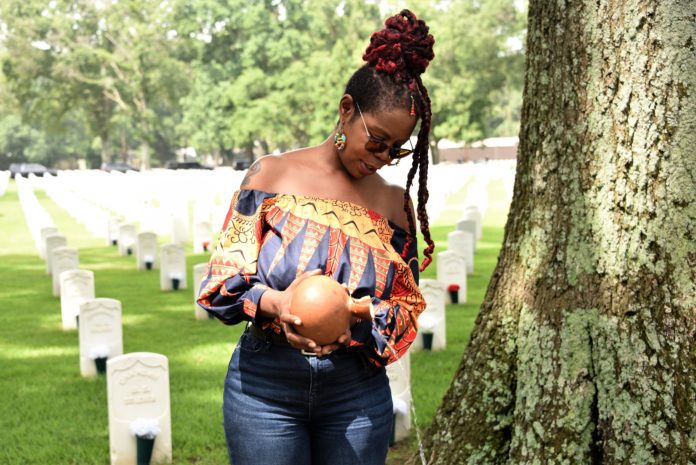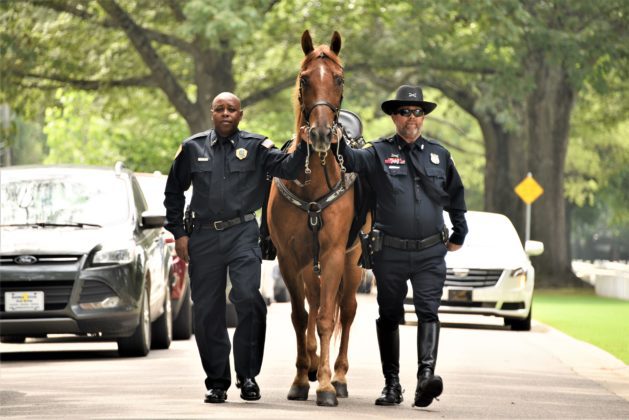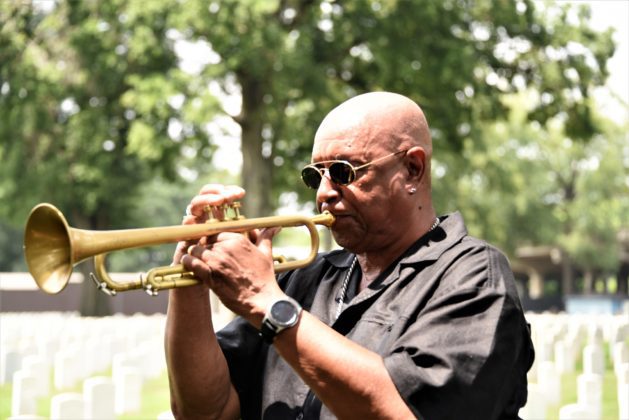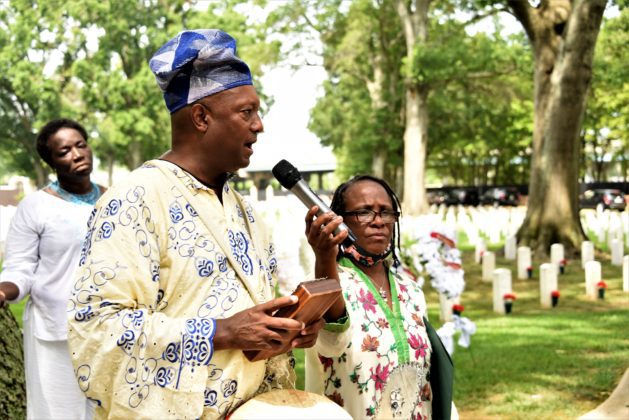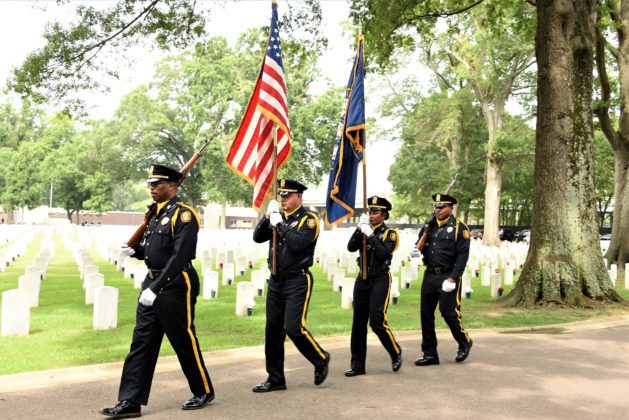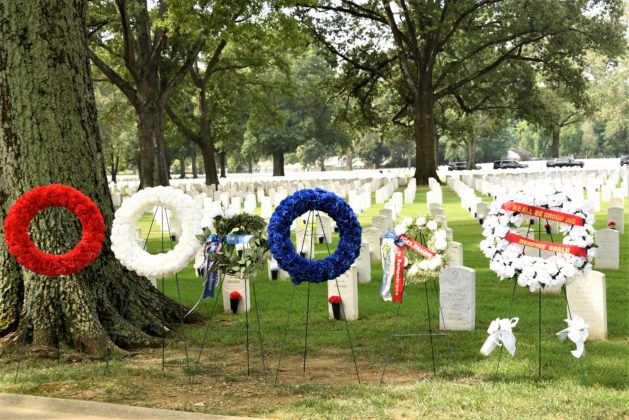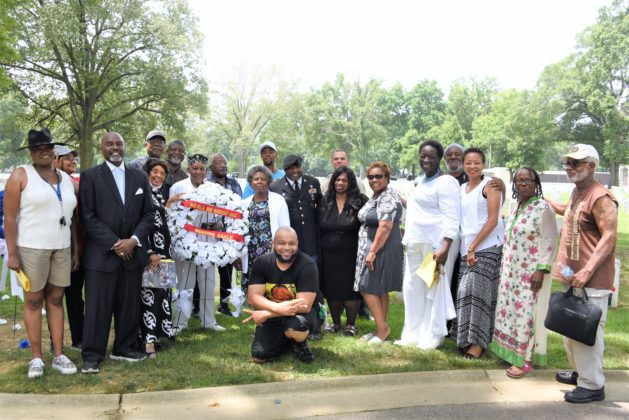Commemorators lined the entrance of Memphis National Cemetery on Friday (June 17), watching as the two police officers led the “rider-less horse.”
A solemn procession of hearses followed, the symbolic motorcade bringing fallen United States Colored Troops from Fort Pillow to their final resting place.
“This is how the memorial begins every year,” said Dr. Callie Herd of We All Be Group, Inc. “There were never any funeral services for those soldiers. They were initially thrown into mass graves, the wounded buried along with the dead.”
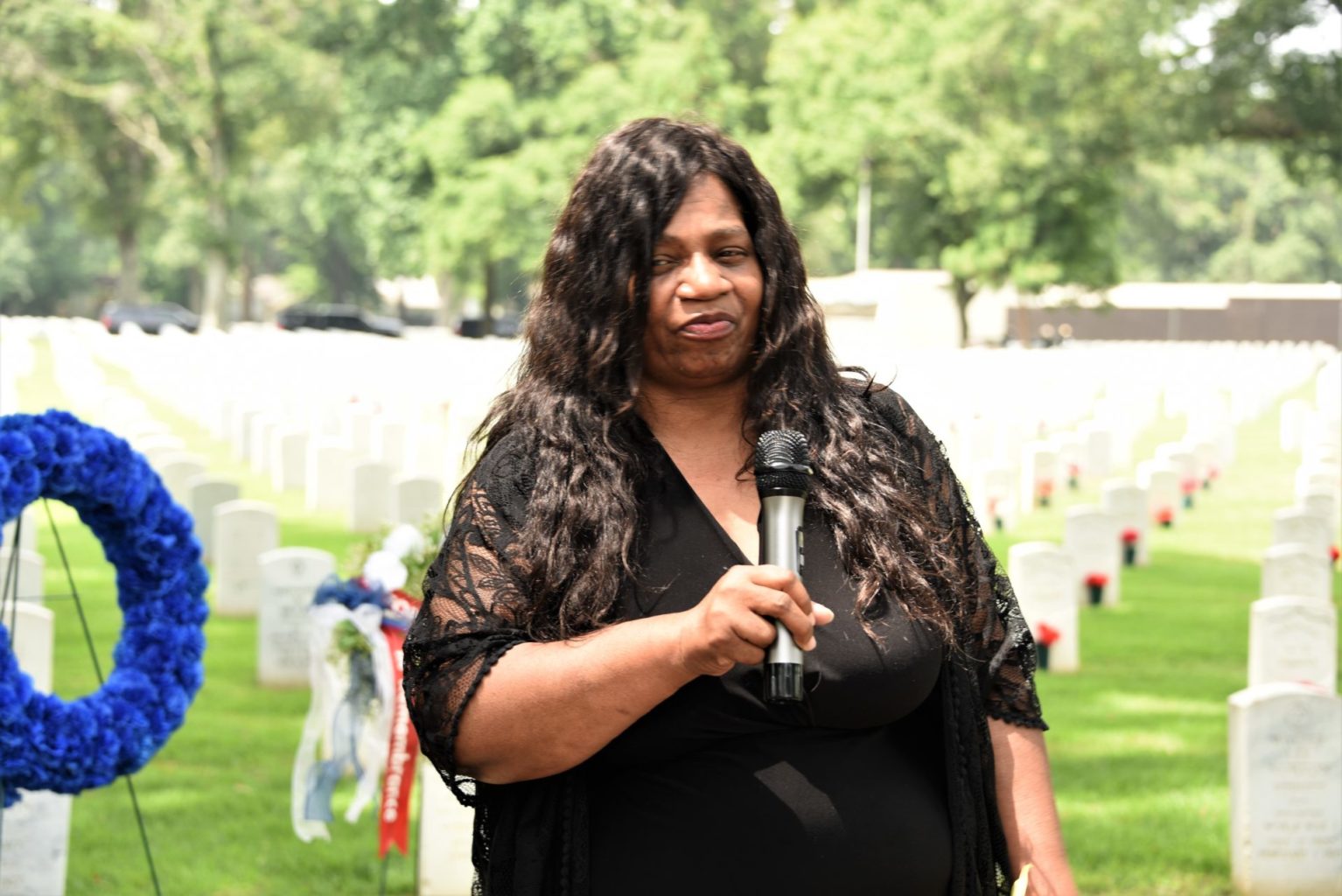
The event was a precursor to Juneteenth, the national holiday coinciding with the June 19, 1865 news of the Emancipation Proclamation reaching Texas and the last group of slaves in the former Confederate states.
“The Fort Pillow Massacre occurred on April 12, 1864,” said Herd. “This year is the 158th anniversary of the slaughter, and our sixth year honoring more than 100 soldiers who were taken from the mass graves and re-interred here at National Cemetery.”
Fort Pillow overlooked the Mississippi River in Lauderdale County, about 60 miles north of Memphis.
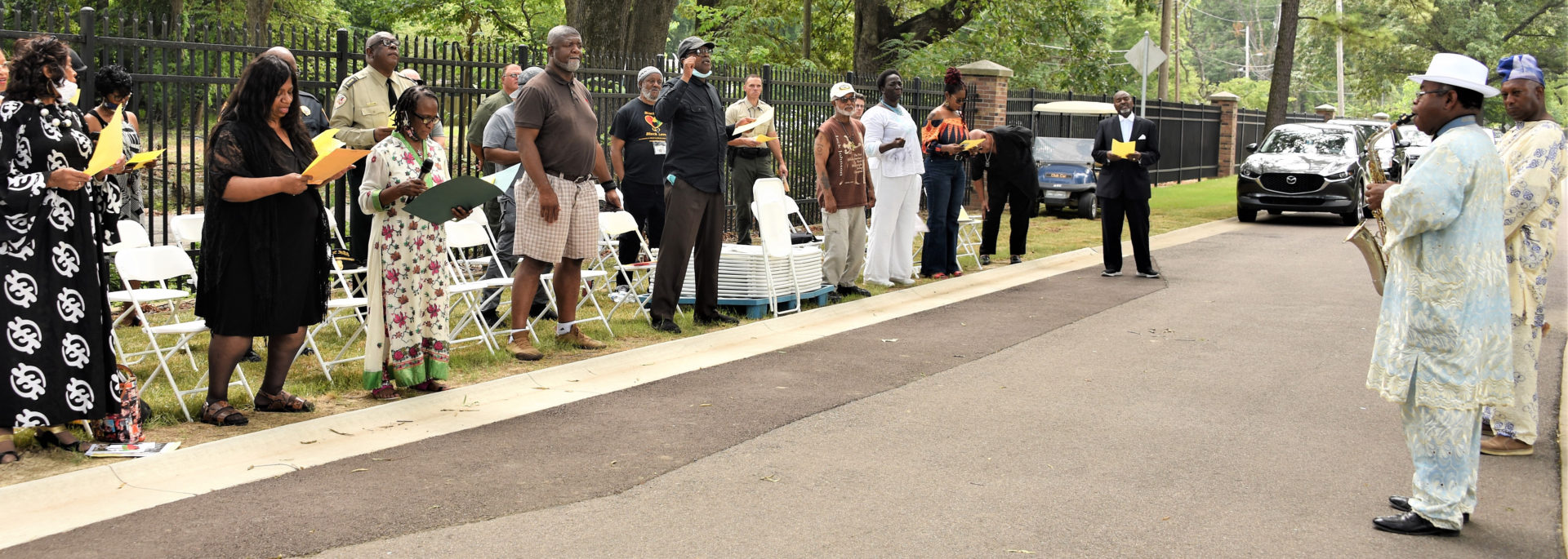
There may be as many as 200 U.S. Union troops in the Fort Pillow section.
The Memphis Police Department Tactical Unit provided a 21-gun salute. A solemn call of the drums by Ekpe Abioto paid homage to the colored troops.
Dr. Alvin McKinney, Memphis’ own “Prime Minister of Joyful Jazz,” played a soulful, sax rendition of “The Star-Bangled Banner,” America’s national anthem, and the Negro National Anthem, “Lift Ev’ry Voice and Sing.”
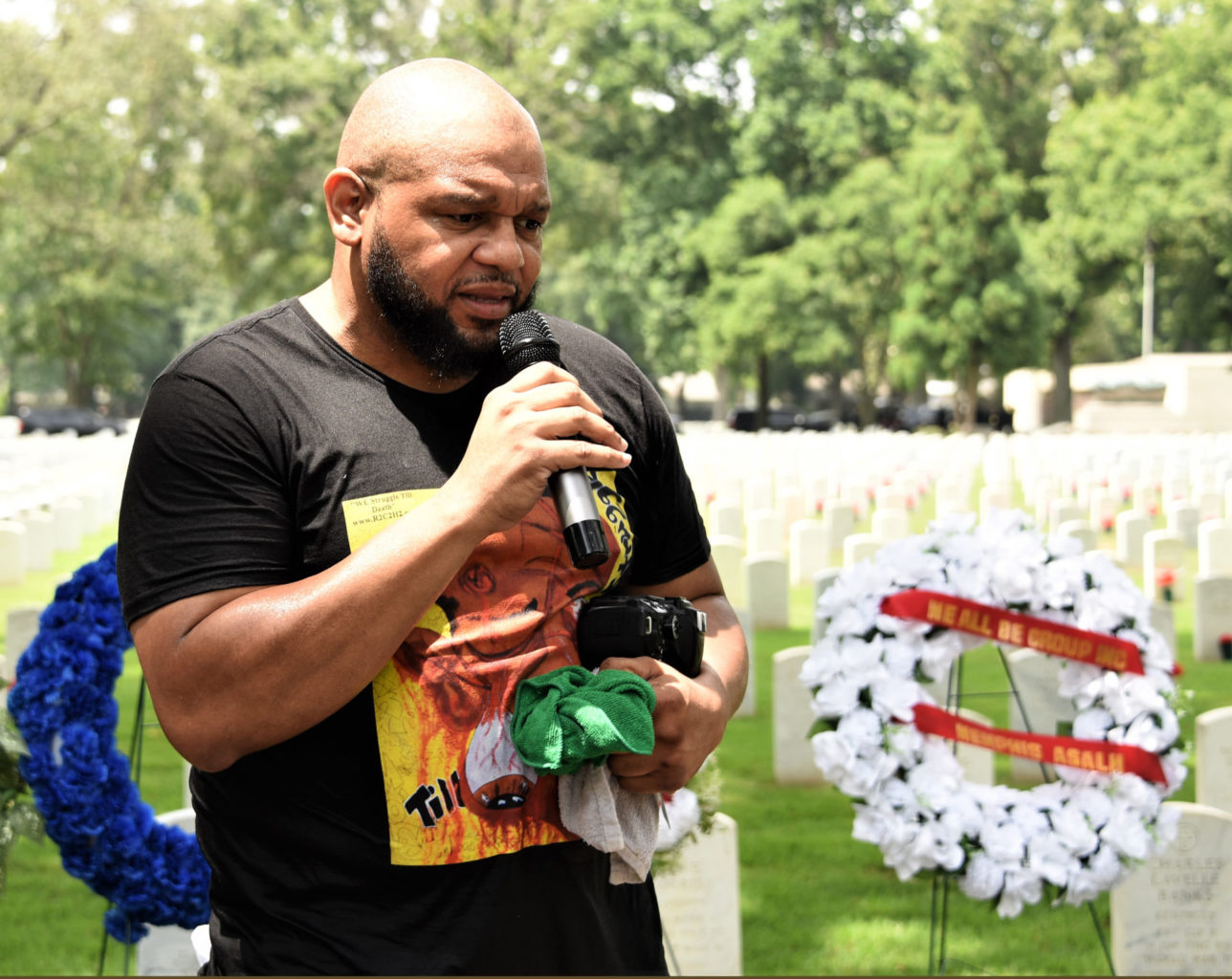
“It’s important for us to remember the sacrifice of these soldiers,” said Ronald Herd, son of Callie Herd. “It is also important to remember that the soldiers at Fort Pillow were massacred, even as they tried to surrender. The 1,500 Confederates were under the command of General Nathan Bedford Forrest.
“Forrest’s attempt to re-write history was useless,” said Ronald Herd. “Eyewitness accounts have those men being shot down like animals, on his direct order. Black women and children were also killed. They bashed in the heads of Black children. This memorial acknowledges what really happened and rejects any attempts at revisionist history.”
A permanent marker in the Fort Pillow section at National Cemetery bears the name and image of Peter Williams, the only Colored soldier whose image survives. His descendent, 88-year-old Joe Williams of Radcliff, Kentucky helped Callie Herd fill in some of the blanks.
“Peter Williams was my great-great-great grandfather,” said Williams. “He was the slave of Jack Williams in Savannah, Tennessee. Peter was a free man, a wanderer.
“When he came to Savannah and met Elsa, one of Jack Williams’ slaves, Peter asked to marry her. Jack Williams would only allow the marriage if Peter became his slave. That’s how he came to belong to Jack Williams.”
Peter, Elsa, and their three young children, followed Generals Ulysses S. Grant and William Sherman when they came through and captured Savannah.
“The generals took everything between Savannah and Corinth, Mississippi,” said Williams. “Peter and his family followed the Union Army to Corinth and later to Memphis. I had 35 ancestors join the Union Army, including Peter. Peter was ordered to take the Colored Troops to guard Fort Pillow. Peter was wounded and thrown onto a pile of dead soldiers.
“Somebody from Jack Williams’ plantation — one of the son-in-laws — said, ‘That looks like Peter over there.’ He went over, and it was Peter. He felt for a pulse, and Peter had a pulse. Although barely alive, Peter was pulled from that pile of bodies being dumped into a mass grave.”
Peter recovered and came back for his family after the war. Peter died in 1915, at the age of 83. He passed down stories of the war and life at Fort Pillow to his children and grandchildren. Those same stories survive today, according to Joe Williams.
Fort Pillow State Historic Park Manager Robby Tidwell, a European American, has attended the memorial every year in Memphis.
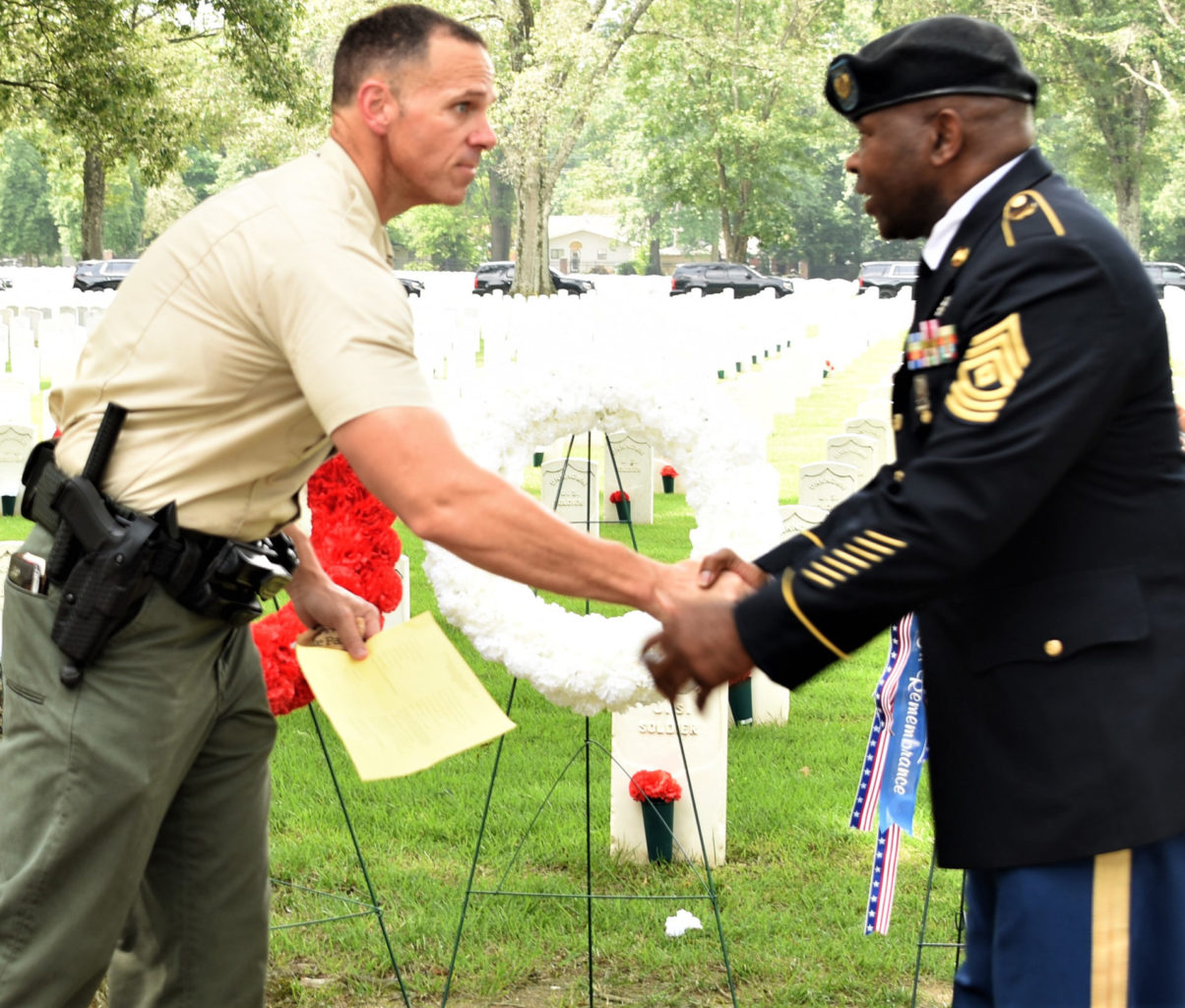
“I have been here over the past five years,” said Tidwell. “The Memphis commemoration is always on a Friday, and ours is on a Saturday, when many people are off from work. We bring four wreaths from Memphis and place them in honor of the fallen soldiers. These events are important because people want to know what really happened. They want to know the truth.
“We want to continue educating people about the Fort Pillow Massacre,” said Tidwell. “We want to preserve the park and preserve its history.”
GALLERY:


